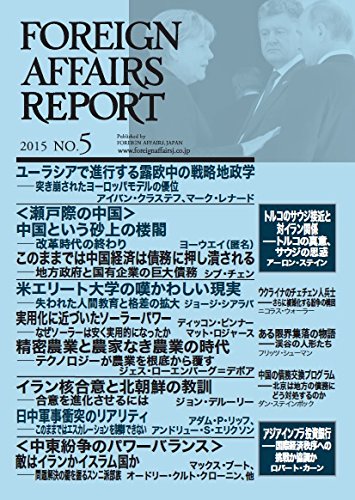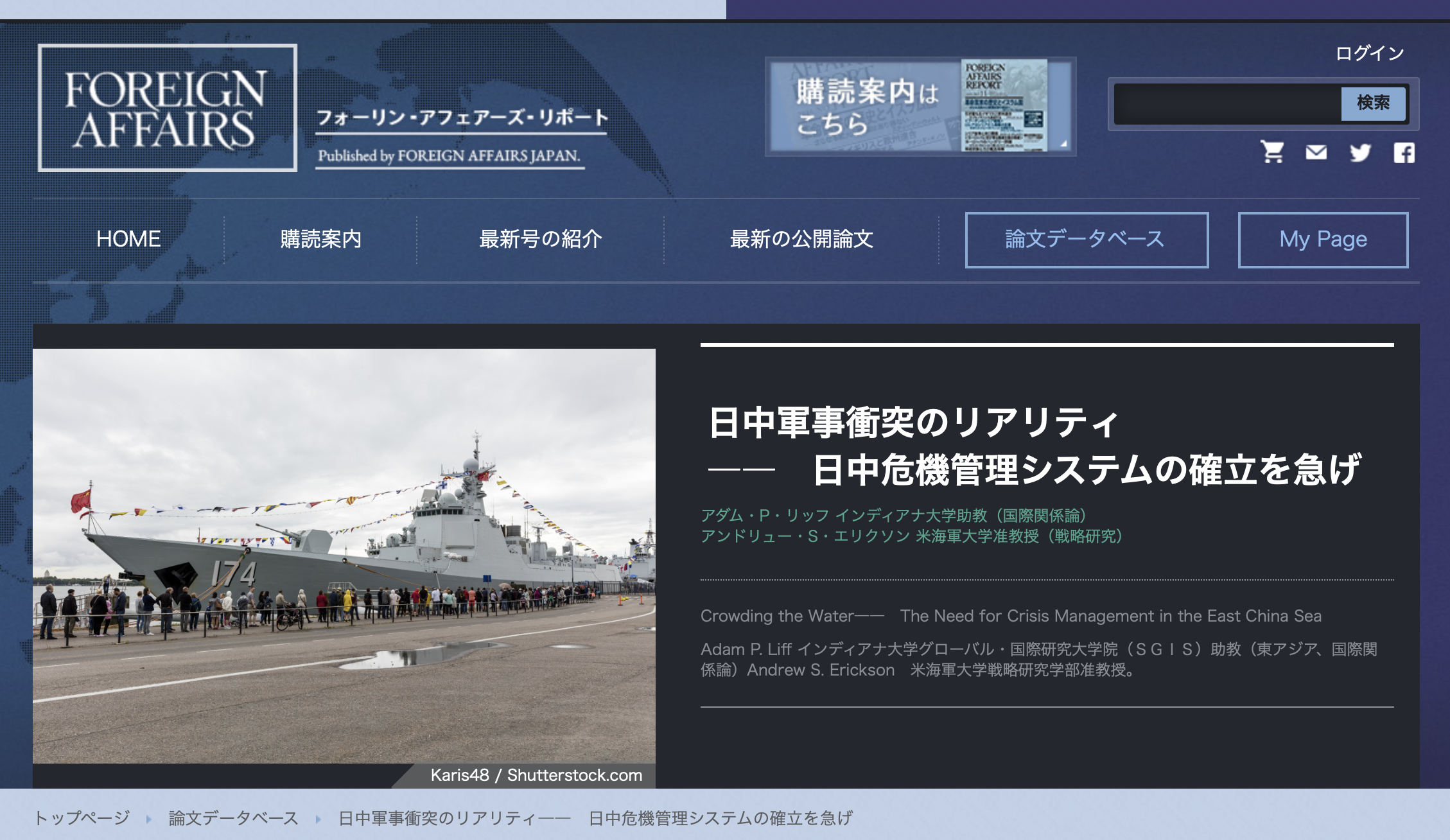Crowding the Waters: The Need for Crisis Management in the East China Sea
Adam P. Liff and Andrew S. Erickson, “Crowding the Waters: The Need for Crisis Management in the East China Sea,” Foreign Affairs, 23 March 2015.
Since September 2012, the waters and airspace surrounding the Senkaku/Diaoyu Islands in the East China Sea have become increasingly crowded. China is conducting more military and paramilitary operations, and Japan is scrambling fighter jets daily. The risk of an unintended low-level incident escalating to a crisis has reached new heights. Given this reality, the two sides urgently need effective bilateral crisis management mechanisms.
Since September 2012, the de facto dispute between Beijing and Tokyo over islands in the East China Sea has become unprecedentedly unstable. China is conducting more military and paramilitary operations in the surrounding waters and airspace than ever, and Japan is scrambling more fighter jets than at any time since record-keeping began in 1958. By 2014, Chinese Major General Zhu Chenghu said, “the slightest carelessness could spark an unintended conflict” between the world’s second- and third-largest economies. A military conflict between China and Japan would have catastrophic consequences and would almost certainly involve the U.S. military.
After a chilly, abbreviated November 2014 summit between Japanese Prime Minister Shinzo Abe and Chinese President Xi Jinping—the first ever meeting between the two leaders—political relations have begun to thaw. But top-level political dialogue, although no longer frozen, remains on thin ice. More important, in the East China Sea things didn’t get much better. Chinese government ships continue to enter Japan’s de facto territorial waters. For its part, Tokyo shows no signs of backing down, scrambling fighters daily to intercept approaching Chinese planes. Meanwhile, public opinion polls record Sino-Japanese acrimony at unprecedented highs.
While neither side wants a conflict, in this volatile reality of increasingly crowded waters and airspace, the risk that a miscalculation or accident could escalate into a major crisis is far too high for comfort. …
JAPANESE-LANGUAGE VERSION:
アダム・P・リッフ [Adam P. Liff], インディアナ大学助教(国際関係論)[Assistant Professor, Indiana University (School of Global and International Studies] andアンドリュー・S・エリクソン [Andrew S. Erickson], 米海軍大学准教授(戦略研究)[U.S. Naval War College (Strategic Research)], “日中軍事衝突のリアリティ――日中危機管理システムの確立を急げ” [Crowding the Waters–The Need for Crisis Management in the East China Sea], フォーリン・アフェアーズ・リポート [Foreign Affairs Report] (May 2015): 64-69.
日中軍事衝突のリアリティ
―― 日中危機管理システムの確立を急げ
Crowding the Water―― The Need for Crisis Management in the East China Sea
東シナ海をめぐる日中関係は、一般に考えられている以上に緊張している。中国軍の高官が言うように、「わずかな不注意でさえも」、世界で2番目と3番目の経済国家間の「予期せぬ紛争に繋がっていく恐れがある」。もちろん、日中はともに紛争は望んでいない。だが、東シナ海の海上と上空の環境が極端に不安定である以上、誤算や偶発事件が大規模な危機へとエスカレートしていく危険は十分にある。世論調査結果をみても、日中間の敵意はこれまでになく高まっている。しかも、偶発的衝突を制御していく力強い危機管理メカニズムが存在しない。中国軍と自衛隊の高官たちでさえも、危機エスカレーションリスクが存在することを懸念している。危機管理メカニズムが必要なことは自明だが、日中両国にそれを導入する政治的意思があるかどうか、依然として不透明な状況にある。・・・
- 緊張を制御するシステムがない
- 対立の激化
- コミュニケーションブレイクダウン
<緊張を制御するシステムがない>
2012年9月以降、北京と東京が繰り広げている東シナ海の島をめぐる攻防によって、かつてなく不安定な環境が作り出されている。中国は、その周辺海域や上空で頻繁に軍事・準軍事的な活動をみせるようになり、日本も、統計がとられるようになった1958年以降、もっとも頻繁に自衛隊の戦闘機をスクランブル(緊急発進)させている。
2014年には、朱成虎(ヂュー・チョンフー)中国軍少将は「わずかな不注意でさえも」、世界で2番目と3番目の経済国家間の「予期せぬ紛争に繋がっていく恐れがある」と発言している。そして、日中が軍事衝突すれば壊滅的な事態に直面し、ほぼ間違いなく米軍が巻き込まれる。・・・







































